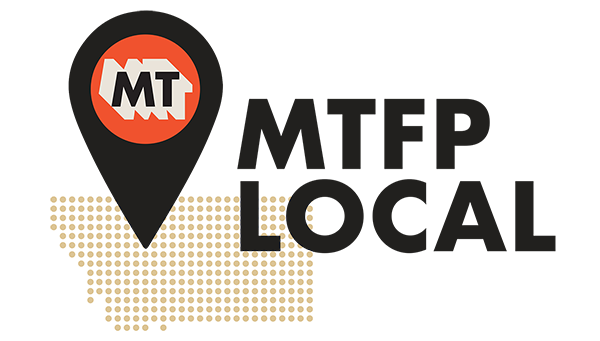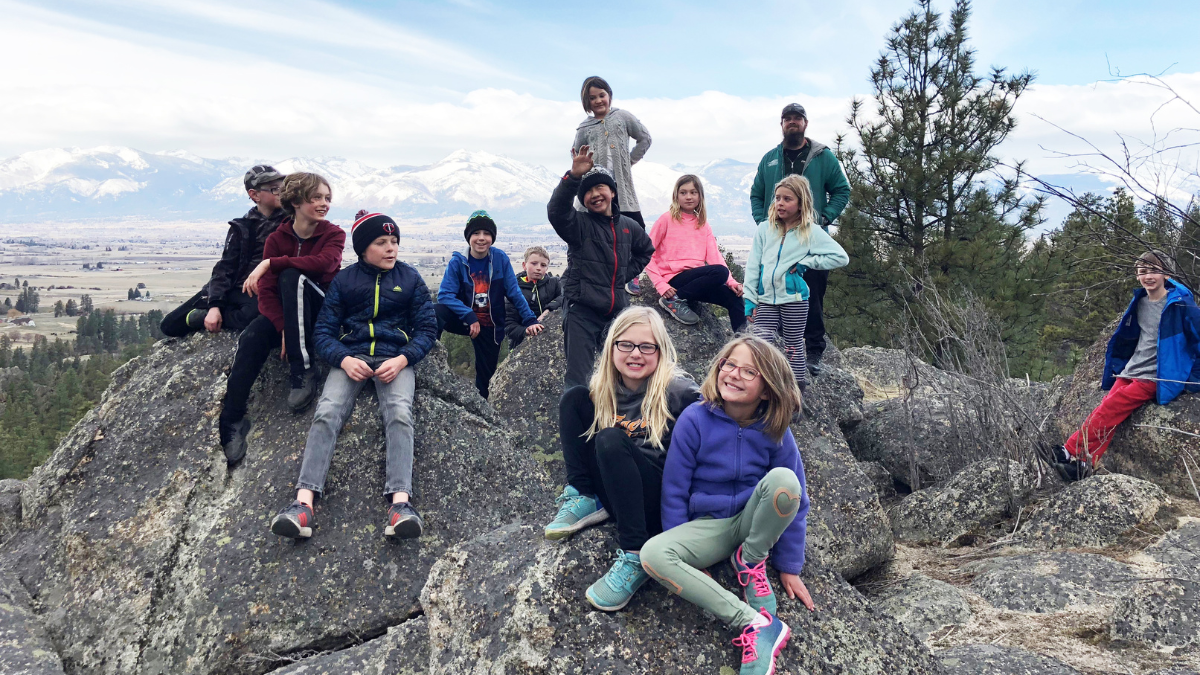Summer camp registration day in Missoula is almost here, a day that parents have marked on their calendars and one that stands to influence the course of an entire summer for many families.
If that sounds melodramatic, it’s because the date the Missoula Parks and Recreation Department opens registration for summer programming — this year, it’s April 2 — has become a critical moment for parents who need childcare during the out-of-school months.
Though hundreds of parents will sign on to the city agency’s website at 9 a.m., many will be disappointed to find their first, second and even third choices filled in minutes.
“One of the most painful parts of my job is that registration is such a stressful day for parents,” said Meg Whicher, the recreation program manager for the parks and rec department.
Demand for summer camps in Missoula has skyrocketed in recent years, city and nonprofit officials said, and providers have struggled to grow capacity quickly enough to keep pace.
Last year, for every child registered in a parks and rec summer camp, 1.5 children were on a waiting list, according to Whicher. This year, 94% of the Missoula Family YMCA summer programs filled up by the end of the first day of registration, which took place in early March.
Parents aren’t just inconvenienced by the lack of ready-made entertainment for their school-age children. Many are left without childcare altogether.
“It is so much more than just enrichment,” said Heather Foster, CEO of the Missoula Family YMCA, the largest provider of licensed childcare in the state of Montana. “We know for most families that it’s childcare. Kids need a safe place to be all day.”
Nearly 14,000 children under the age of 12 lived in Missoula as of 2021, according to the most recent data available from the Kids Count Data Center. Summer break for Missoula County Public Schools runs for roughly 11 weeks between early June and the end of August. That’s a lot of hours for a parent to find childcare.
While the parks and rec department, the YMCA and the Boys & Girls Club offer programs all summer long, other organizations offer smaller, one-off options that parents can cobble together to round out their summer’s worth of enrollment. There are farming camps at Garden City Harvest, docent camps at Fort Missoula, science camps at the Natural History Museum, art camps at the Missoula Art Museum, theater opportunities at the Missoula Children’s Theatre, and much more. Many of these smaller programs cost more than $300 per week per child.
Registration is different for every camp, as are the hours and transportation requirements. It’s gotten so complicated that the Missoula Public Library and nonprofit Families First Learning Lab co-host an expo to help families navigate the process.
“What we’ve heard from parents is that the struggles of trying to piece it together can be really challenging, especially for families that are in jobs and sectors that don’t provide flexibility during the summer,” said Heather O’Loughlin, executive director of the Montana Budget & Policy Center.
It’s not that organizations aren’t trying to keep up with the growing demand.
Parks and rec has increased the number of programs it offers by almost 300% in the last decade, according to Whicher. It runs between 11 and 15 camps each week with up to 25 kids in every program. Compared to last summer, the agency will offer 700 more spots this year.
Major constraints to ramping up capacity are staffing, transportation and space.
Both the YMCA and parks and rec run junior counselor programs that give former campers the opportunity to work as camp staffers as teenagers. Whicher said the department also recently increased its wages for seasonal staffers and added more paid time off for full-time employees in order to avoid the burnout intrinsic to the work.
“I try to strike the balance of wanting to have epic, amazing programs, but we can only do that if the staff is supported,” Whicher said. “That’s the recipe for an amazing summer camp.”
Additionally, the two organizations have worked to create more neighborhood-based opportunities — using local parks or schools as home bases — to reduce the transportation burden on families. Even so, programs must have ready access to restrooms and rainy-day contingency plans, which can make finding suitable locations for day-long camps difficult.
Some have posited that the current shortage is due to droves of newcomers who now call Missoula home. Since 2010, Missoula County has grown by roughly 9.5%, but the number of children under the age of 12 has actually stayed relatively consistent, according to the Kids Count data.
Ask people who do this for a living and they’ll tell you the summer camp problem is really indicative of a much larger social trend, one that can’t be solved by simply hiring more counselors or finding more spaces to host programming.
“Yes, we have an increasing population, but in all actuality what’s really happening is that our society is set up for a model that does not reflect what our society and families need,” Whicher said.
While the current setup favors households with two caregivers who can either afford personalized childcare or don’t need dual incomes, most of the kids Whicher sees in summer camps come from households with a single caregiver or two who both need to work. Those economic dynamics don’t end when school lets out for the summer.
“Summer camp has gone from this thing that is extra to becoming essential childcare for families to just being able to continue to operate and raise their families,” she said. “Unfortunately, our society has yet to catch up with that.”
“Yes, we have an increasing population, but in all actuality what’s really happening is that our society is set up for a model that does not reflect what our society and families need.”
Meg Whicher, recreation program manager for the Missoula Parks and Recreation Department
The argument that failure to ensure access to quality childcare — including during the summer months — has far-reaching societal implications isn’t a theoretical one. It’s borne out in the data.
According to Montana’s Bureau of Business and Economic Research (BBER), 57% of households reported struggling to find affordable childcare. A November 2020 report from the Montana Department of Labor and Industry found that existing licensed childcare facilities are able to meet only an estimated 47% of demand.
Additionally, 62% of families reported missing time from work due to childcare problems, and 12% quit their job altogether. Those burdens were most pronounced for low-income households earning less than $30,000 per year. Inadequate childcare across Montana forces the state’s economy to take a major hit, according to the BBER report. In 2019, its analysis concluded that households lost over $145 million, businesses missed out on more than $54.5 million, and taxpayers were denied $32 million.
“We know that there are families out there that are struggling to cover childcare and are making choices to leave the workforce or alter their hours instead,” O’Loughlin said. “It is important for children to be able to access quality care, but it’s also important for our broader economy, too.”
Advocates say there are things that state and federal governments can do to support access to summer camps that would also benefit the state’s fledgling childcare infrastructure. There’s talk in the Montana Legislature about a child tax credit that would provide financial relief to low-income families with children under the age of 6 and the possible expansion of the state’s eligibility standards for the Best Beginnings Scholarship Program, which helps low-income earners afford childcare.
But there’s a long way to go. And, until then, it falls on individual agencies and organizations to try to make the numbers work, and disappoint many families along the way.
Parks and rec summer camps cost anywhere from $85 to $420 per week per child for families paying full price, depending on the type of activity. The department has also been working to build awareness of its scholarship program. Whicher said the fees cover only about 80% of the summer camp costs, a reality made possible by subsidies from the city’s budget to the public agency.
The YMCA charges about $220 per week for summer camp, which includes programming from 9 a.m. to 4 p.m. and additional childcare for a few hours before and after for those who need it. They have about 300 to 350 kids enrolled in camp each day, and about a third of those students are using some kind of financial aid.
“The families that can pay, do, and for the ones that can’t we are able to stand in that gap so we can help everybody,” said Foster at the Missoula Family YMCA.
Summer camp providers encourage families to get on waitlists and to reach out with questions about registration or financial assistance.
“Let’s talk and figure it out,” Whicher said. “Hopefully we all societally figure out a way to support our families and kids both in and out of school time. One day we will.”

In-depth, independent reporting on the stories impacting your community from reporters who know your town.
latest stories
Gianforte pushes university regents to restrict transgender athletes
A May 14 letter from the governor to Montana’s higher education governing board follows a court ruling that a 2021 law restricting athletic participation by transgender women usurped the regents’ authority.
Introducing the Big Sky kebab burger
With its heavy Turkish influence, my reinvented kebab burger is like a flavorful skewered meatloaf in tube form. It’s almost like an uncased sausage. Give it a try and I’m willing to bet it finds its way into your summer grilling rotation.
BLM to end new coal leasing in Powder River Basin
The agency’s decision comes amidst declining coal production nationally and moves by the Biden administration to curtail the power sector’s contribution to climate change.

